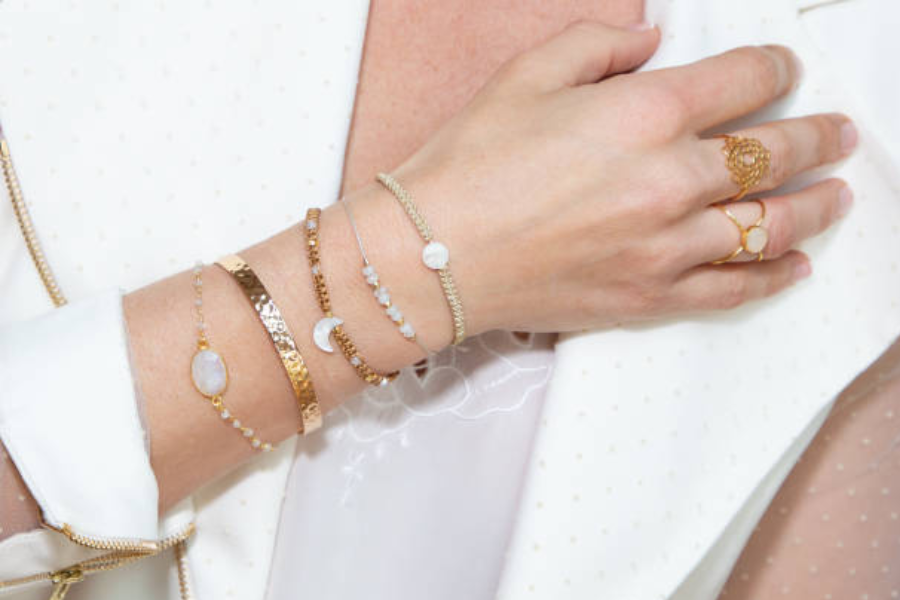Authenticating pre loved designer bracelets before purchase is crucial to ensure that you are investing in a genuine and valuable piece rather than a counterfeit or replica. With the rise of the pre-loved market, where high-end designer jewelry is bought and sold, understanding how to verify authenticity can save you from costly mistakes. Here’s a comprehensive guide on how to authenticate pre-loved designer bracelets before making a purchase:
1. Research the Brand and Model
Before diving into authentication, familiarize yourself with the specific brand and model of the bracelet you’re interested in. Each designer brand, such as Chanel, Cartier, or Hermes, has distinct features and craftsmanship standards. Research the brand’s signature design elements, typical materials used, and common hallmarks. Understanding these details will help you identify discrepancies and spot potential fakes.
2. Check the Seller’s Reputation
When purchasing pre loved designer bracelets, buying from reputable sources is essential. Verify the seller’s credibility by checking reviews, ratings, and any affiliations with reputable organizations or resellers. Reputable sellers often provide guarantees of authenticity and detailed information about the piece. Avoid sellers with a questionable track record or those that lack transparency in their transactions.
3. Examine the Craftsmanship
Designer bracelets are known for their superior craftsmanship and attention to detail. Examine the bracelet closely for the following indicators of authenticity:
– Materials: Genuine designer bracelets are crafted from high-quality materials like solid gold, platinum, or genuine gemstones. Inspect the metal’s weight and texture, and look for consistent finishes.
– Engravings and Hallmarks: Authentic designer bracelets usually have specific engravings or hallmarks indicating the brand, metal type, and sometimes the country of origin. Check for these markings, ensuring they match the brand’s standard placement and style.
– Edges and Seams: High-end bracelets have smooth edges and well-finished seams. Counterfeit items may have rough or uneven edges and poor-quality finishing.
4. Verify the Serial Number
Many designer bracelets come with a serial number or unique identification code. This number can often be found on the bracelet’s inner surface or on accompanying documentation. Cross-check the serial number with the brand’s database or contact the brand’s customer service to verify its authenticity. Be aware that some counterfeit pieces may have fake serial numbers, so ensure that the number matches the design and era of the bracelet.
5. Check the Packaging and Documentation
Authentic designer bracelets typically come with original packaging, such as a branded box or pouch, and documentation like certificates of authenticity or purchase receipts. Examine these items for signs of authenticity:
– Packaging: Genuine packaging should be high-quality and branded with the designer’s logo. Look for correct spellings, logos, and color schemes.
– Documentation: Certificates of authenticity should be properly formatted and include details about the bracelet’s specifications. Verify the details and ensure they correspond with the bracelet you are examining.
6. Seek Expert Opinion
If you are uncertain about the authenticity of a pre-loved designer bracelet, consider seeking an expert opinion. Professional appraisers or jewelry experts can provide an in-depth analysis and verification of the piece. They have the expertise and tools to assess the bracelet’s quality, materials, and authenticity more accurately.
7. Compare with Official References
Compare the bracelet in question with official references from the designer brand. Many brands provide detailed images and descriptions of their designs on their websites or through authorized retailers. Use these references to compare details such as the design, engravings, and overall appearance of the bracelet. Look for any discrepancies or inconsistencies that may indicate a counterfeit piece.
8. Conduct a Magnet Test
For metal bracelets, a simple magnet test can help identify fake materials. Most genuine designer bracelets are made from high-quality metals that are not magnetic. If a bracelet reacts to a magnet, it may contain base metals or alloys that are not consistent with the brand’s standards. However, this test should not be the sole method of authentication, as some authentic metals can also be slightly magnetic.
9. Review the Condition
While pre-loved bracelets naturally show some signs of wear, the overall condition should still reflect the brand’s standards. Check for any unusual signs of wear or damage that may suggest a counterfeit or poorly made piece. Authentic designer bracelets are generally well-maintained and show minimal signs of poor craftsmanship.
10. Evaluate the Price
Lastly, be cautious of prices that seem too good to be true. While pre-loved designer bracelets can be found at a lower cost than new ones, extremely low prices can be a red flag for counterfeit items. Compare prices from various sources to get a sense of the bracelet’s market value and avoid deals that seem suspiciously cheap.
Conclusion
Authenticating pre loved designer bracelets requires a combination of research, careful examination, and expert advice. By understanding the brand’s specific features, verifying the seller’s reputation, and checking the craftsmanship and documentation, you can make an informed decision and ensure that you are purchasing a genuine piece. Using these strategies will help you confidently invest in pre-loved designer bracelets and enjoy the luxury and value they offer.
Discover the latest news and updates on Creative Released



